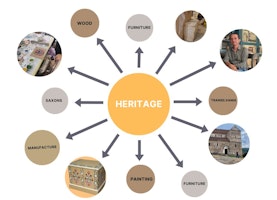Stories of transformation
Hear from participants how their thoughts on intangible cultural heritage were transformed in the HEART pilot courses.

Hear from participants how their thoughts on intangible cultural heritage were transformed in the HEART pilot courses.

This theory-based toolkit unit defines ecosocial education and discusses its relationship to transformative learning and intangible cultural heritage

Participant surveys can help develop your activities, as well as giving participants an opportunity to reflect on their learning. Digital tools make participant surveys easy.

Safer space means everyone can participate in an activity without unnecessary barriers. Each group can define their own principles for creating safer space.

Considering the ecological, economic, social and cultural sustainability of your educational activities helps in creating far-reaching positive effects for your work.

How many kinds of intangible cultural heritage influence people's everyday lives?

This working approach can be adapted to any context where the aim is to learn the craft techniques for making a heritage object based on art. In this case, painting is the field of artistic expression.

Heritage is not an exclusively artistic field. This exercise is a case study where heritage is a field of economic activity. The exercise can be used in economics and career guidance classes.

This video explains how the local community of Cisnadioara supports the promotion of the Saxon cultural heritage and supports the traditional local economy. An example is the Pension 7 Linden. It can be used as a case study in applied economics in undergraduate Tourism/Geography courses.

The practical activity of learning a traditional craft can lead to a rich understanding of the intangible heritage that surrounds it. Here, the example is a very typical Spanish piece of pottery: the “botijo” (earthenware pitcher).

A selection of useful tools from the LIVIND project, which focused on living heritage and sustainability

Digital tools play an important role in safeguarding, promoting and preserving heritage. Technology has given us what we now call the third category of heritage — digital heritage. Such digital heritage can be accessed in any context and put to use according to one's creativity.
